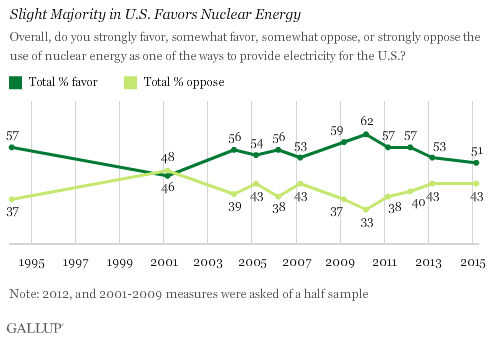(Issued March 3, 2015)
FULL RULING
On February 28, 2014, Algonquin Gas Transmission, LLC (Algonquin) filed an
application in Docket No. CP14-96-000 pursuant to section 7(c) of the Natural Gas Act
(NGA) and Part 157 of the Commission’s regulations for authorization to construct and
operate its Algonquin Incremental Market Project (AIM Project) in New York,
Connecticut, Rhode Island, and Massachusetts. Algonquin also requests NGA
section 7(b) authorization to abandon a meter and regulating station in New London
County, Connecticut, which will be replaced as part of the project, as well as to remove
and replace certain aboveground facilities.
Algonquin states that the project will
enable it to provide 342,000 dekatherms (Dth) per day of firm transportation service from
its existing recipient points in Ramapo, New York, to various city gate delivery points in
Connecticut, Rhode Island, and Massachusetts.
For the reasons stated below, we (FERC) will grant the requested authorizations, subject to
certain conditions.
I. Background and Proposals
Algonquin is a limited liability company organized and existing under Delaware
law and an indirect, wholly-owned subsidiary of Spectra Energy Partners, LP. Algonquin
is a natural gas company as defined in the NGA, engaged in the transportation of natural
1 15 U.S.C. § 717f(c) (2012).
2 18 C.F.R. Pt. 157 (2014).Docket No. CP14-96-000 - 2 -
gas in interstate commerce subject to the Commission’s jurisdiction. Algonquin’s natural
gas pipeline system extends from points near Lambertville and Hanover, New Jersey,
through the states of New Jersey, New York, Connecticut, Rhode Island, and
Massachusetts, to points near the Boston area.
A.
Project Proposal
Algonquin proposes to construct, install, operate, and maintain approximately
37.4 miles of pipeline and related facilities in New York, Connecticut, and
Massachusetts. Specifically, Algonquin proposes the following activities:
• replace approximately 20.1 miles, in three segments, of 26-inch-diameter
pipeline with 42-inch-diameter pipeline in Putnam, Rockland, and
Westchester Counties, New York, and Fairfield County, Connecticut;
• install approximately 2.0 miles of 36-inch-diameter pipeline looping in
Middlesex and Hartford Counties, Connecticut (Line 36A Loop Extension);
• replace approximately 9.1 miles of 6-inch-diameter pipeline with 16-inchdiameter
pipeline on the E-1 System Lateral in New London County,
Connecticut (E-1 System Lateral Take-up and Relay);
• install approximately 1.3 miles of 12-inch-diameter pipeline looping in
New London County, Connecticut (E-1 System Lateral Loop); and
• install approximately 4.1 miles of 16-inch-diameter pipeline and
approximately 0.8 miles of 24-inch-diameter pipeline off its existing I-4
System Lateral in Norfolk and Suffolk Counties, Massachusetts (West
Roxbury Lateral). In addition, Algonquin proposes to add 81,620 horsepower (hp) of compression at
six compressor stations in New York, Connecticut, and Rhode Island with the following
modifications:
• install two new 15,900 hp natural gas-fired compressor units, restage one
existing compressor unit, install gas cooling for the new compressor units,
and modify station piping at the Stony Point Compressor Station in
Rockland County, New York;
• install one new 10,320 hp natural gas-fired compressor unit, restage one
existing compressor unit, replace the compressor body of one existing
compressor unit, install gas cooling for the new compressor unit, and
modify station piping at the Southeast Compressor Station in Putnam
County, New York;Docket No. CP14-96-000 - 3 -
• restage one existing compressor unit at the Oxford Compressor Station in
New Haven County, Connecticut;
• install one new 15,900 hp natural gas-fired compressor unit, install gas
cooling for the new compressor unit and two existing turbine-driven
compressor units, and modify station piping at the Cromwell Compressor
Station in Middlesex County, Connecticut;
• install one new 7,700 hp natural gas-fired compressor unit, restage two
existing compressor units, install gas cooling for the new compressor unit
and two existing compressor units, and modify station piping at the Chaplin
Compressor Station in Windham County, Connecticut; and
• install one new 15,900 hp natural gas-fired compressor unit, restage one
existing compressor unit, install gas cooling for the new compressor unit,
and modify station piping at the Burrillville Compressor Station in
Providence County, Rhode Island. (
FERC)





















